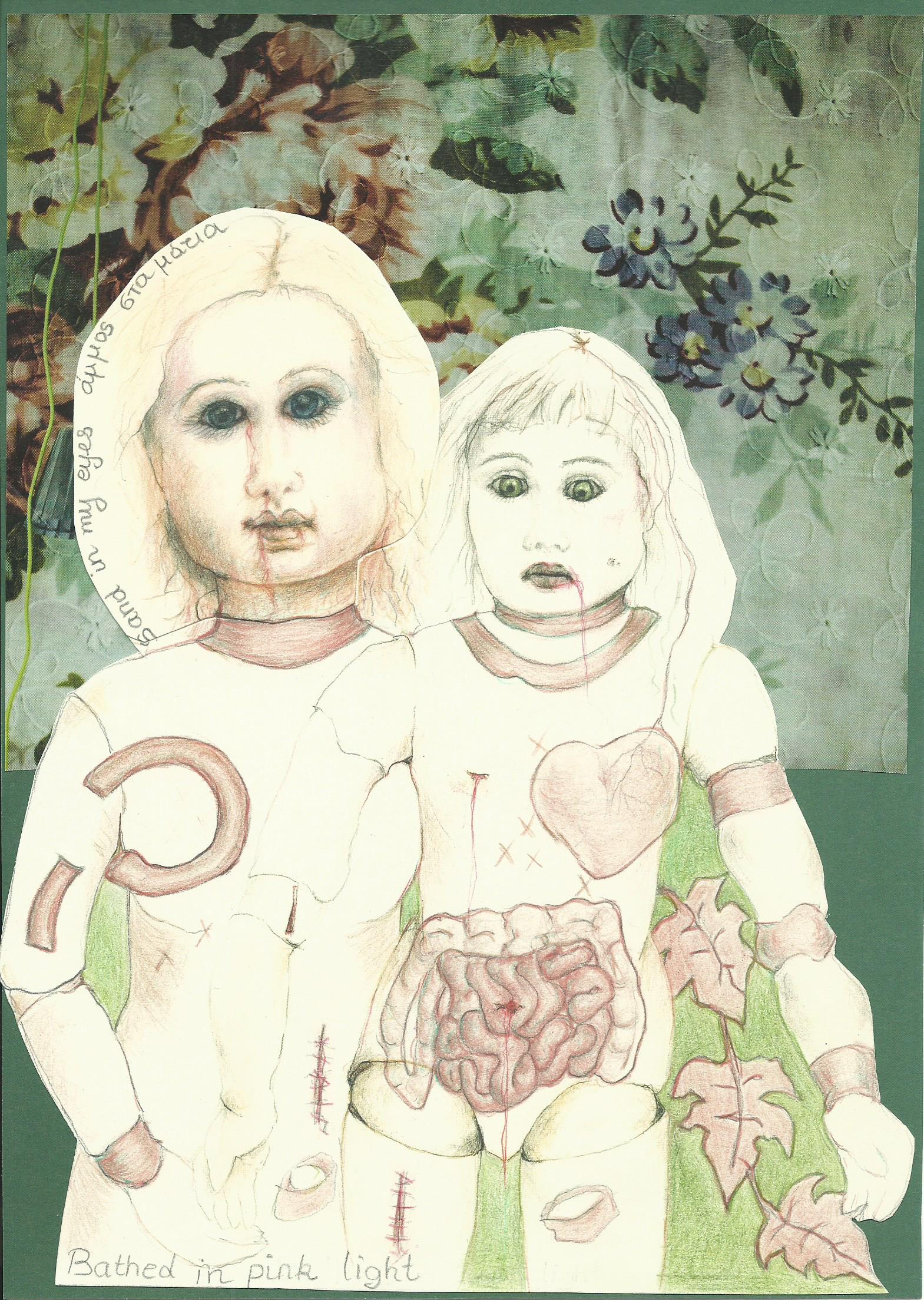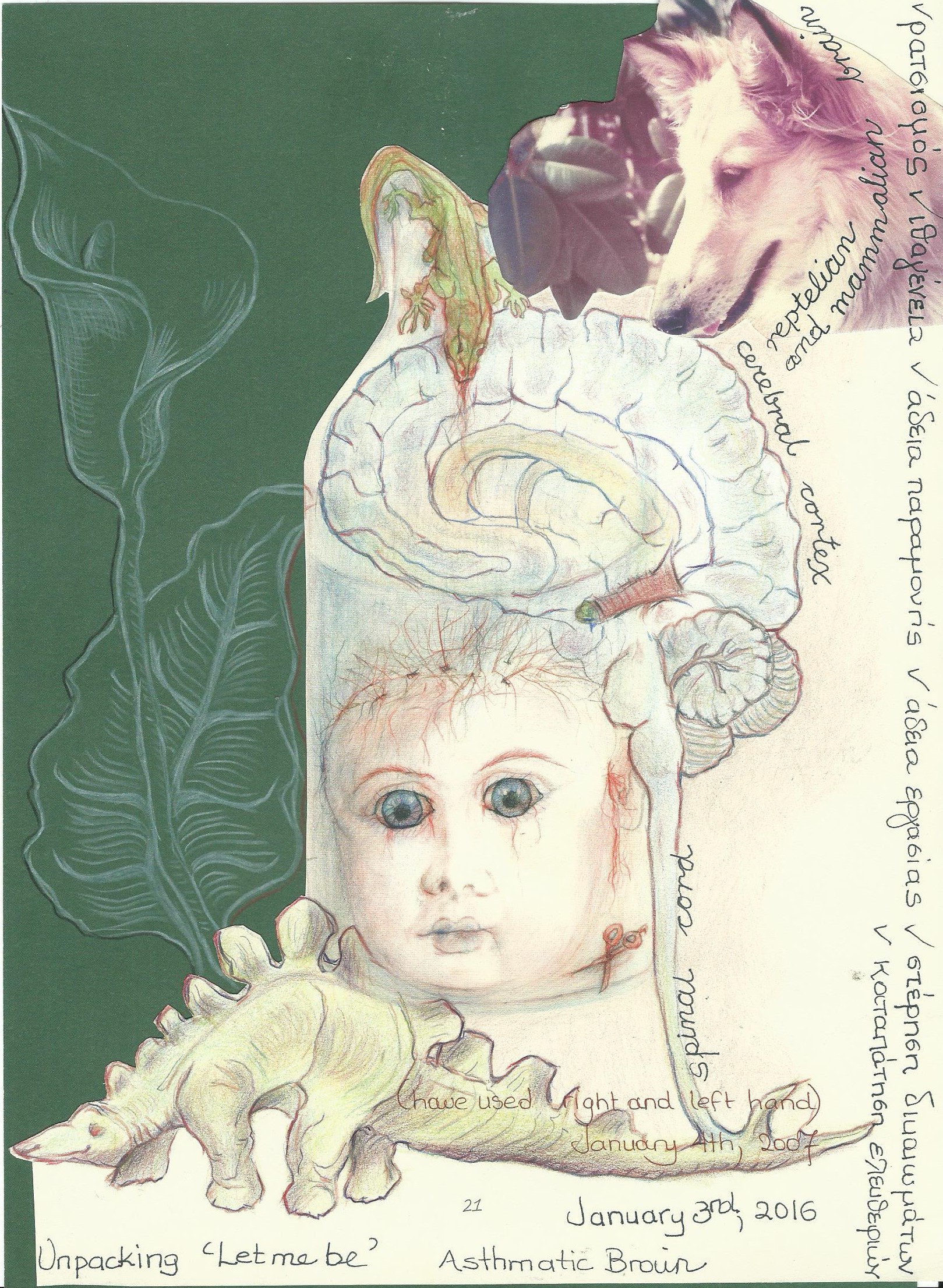 ‘The only certain shore is the heart ….’ (Lyrics belong to a song sung by L. Macheritsas)
‘The only certain shore is the heart ….’ (Lyrics belong to a song sung by L. Macheritsas)
Accompanying brief notes
The main sources for the notes below are from Mindsight: The New Science for Personal Transformation by Dr Dan Siegel and Beyond the Brain: How the Vagal System Holds the Secret to Treating Trauma by Dr Stephen Porges and Dr Ruth Buczynski from http://stephenporges.com/images/nicabm2.pdf
A) The amygdala, which is part of our limbic system and is located at the end of the hippocampus, is important in our fear response and controls the way we react to certain stimuli or events that we perceive as threatening. The hippocampus is a cluster of neurons that functions as the ‘puzzle-piece-assembler’ linking together separated areas of the brain. The hippocampus links various aspects of an experience, such as, the sensations in the body, emotions, thoughts, facts and reflections. The right hippocampus integrates implicit and explicit memories. It weaves emotional and perceptual memory into factual and autobiographical recollections, laying the foundation for our ability to tell our story and to narrate a past experience. Dreams are also one of the important ways to integrate memory and emotion and they occur when cortical inhibition is released enough to allow subcortical limbic and brainstem regions to interact with imagination and feelings. This narrating ability is also dependent on the cerebral cortex, which is the outer wrinkly layer of the brain and is packed tightly with neurons. It is divided into four lobes, the frontal, temporal, parietal and occipital. For instance, the occipital lobe makes sense of visual information. The temporal lobe makes sense of auditory stimuli and evolves around both hearing and selective listening. The cortex is also called the mammalian brain because it expanded greatly with the appearance of the primates, especially, human beings. The frontal cortex, for example, allows us to have ideas and to develop mindsight maps that give us insight into our inner worlds. It allows us to create representations of time, a sense of self, moral judgments, etc. The prefrontal cortex links the brainstem, the limbic area the higher cortex, the body and our natural environment and social world.
The brainstem, which is also called the reptilian brain, was formed hundreds of millions of years ago. Neurons in the brainstem come into play when events require fight-flight-freeze or faint responses, which are responsible for our survival when we are threatened or in danger. However, our brainstem defence strategies – fight, flight, immobilization and shut down, are not voluntary. They occur outside the realm of our conscious awareness since our nervous system is continuously assessing risk and danger in the environment and making fast survival oriented decisions. Humans and other mammals like dogs, monkeys or koalas, only resort to fight or flight when they are able to. If, for instance, they are confined in a cage or strapped down or if fight and flight are evaluated as impossible and futile then the nervous system ‘opts for’ immobilization, passing out and leaving the scene. However, humans do not rely only on these four F responses of brainstem reactivity, but in times of stress they also have the capacity to tend and befriend, which activates our social engagement system that is embedded in our mammalian brain.
Additionally, the brainstem controls energy levels of the body and shapes energy levels of the brain and it receives input from the body and also sends input back down to the body to regulate basic processes, such as, the functioning of the heart, lungs, etc. The heart, the intestines and other major organs have an extensive network of nerves that process complex information and send data to the skull-based brain. For instance, the medulla, which is part of the brainstem, helps transfer neural messages from the brain to the spinal cord. Our immune system also interacts with our nervous system. Finally, the cauliflower shaped cerebellum is important for being able to perform tasks, such as, walking, writing and standing balanced and upright.
B) During the next few days I will post notes on Dr Stephen Porges’ polyvagal theory and on how trauma impacts our physiology
Dr Stephen Porges’ BODY PERCEPTION QUESTIONNAIRE (1993), which has five sub-tests: a) Awareness b) Stress Response c) Autonomic Nervous System Reactivity d) Stress style and e) Health History Inventory, can be retrieved from his website
http://stephenporges.com/index.php/publicationss/21-body-perception-questionnaires

